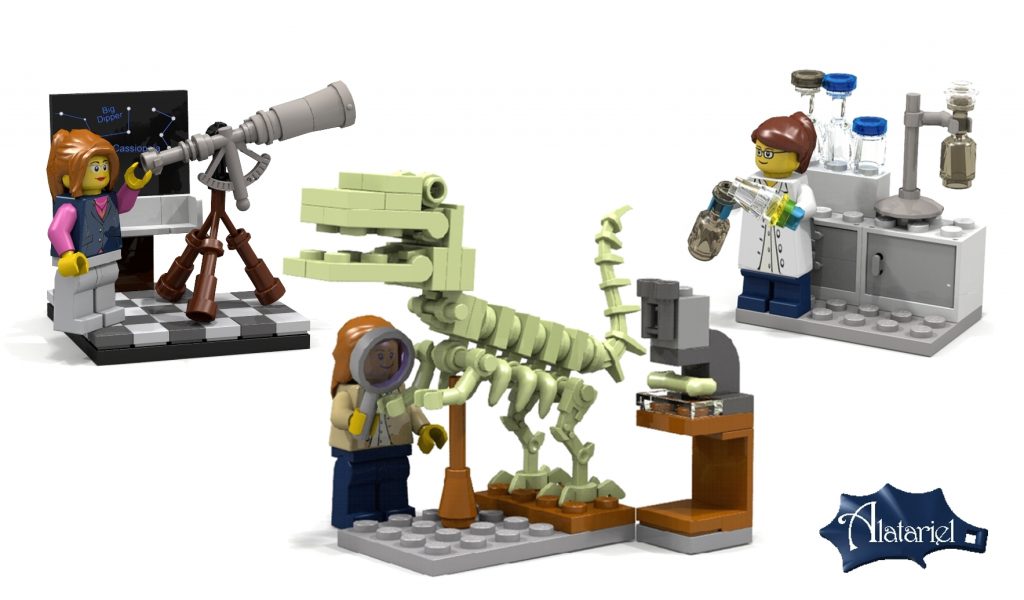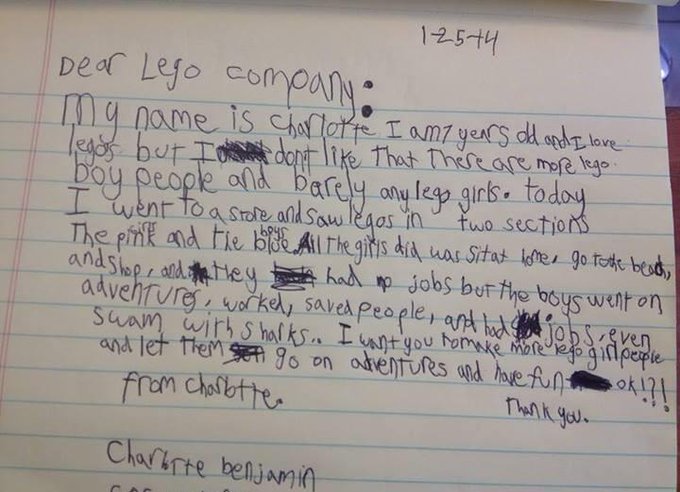A Brick That Broke the Glass Ceiling
The Lego Group is a toy company that has been around since 1932. They’re the makers of LEGO bricks and sets, so you’re very likely familiar with them. You may even be a die-hard fan of their product. If so, there’s great news for you: since 2008, the Lego Company has been soliciting ideas for new LEGO brick sets from its community of fans. Through a portal called “LEGO Ideas,” anyone can become a set designer — you simply need to come up with an idea, build it using real bricks or virtual building tools, submit it, and get 10,000 other fans to pledge their support. At that point, Lego’s professionals will review your idea and, maybe, select it for manufacture. Over the years, fan designs for the Internation Space Station, a working Labyrinth marble maze, the sets of Seinfeld and Sesame Street, and a playable 25-key grand piano have all made their way to retailers.
And so has this — but it took more than just 10,000 supporters to get it to stores.

That design was submitted in April of 2012 by Ellen Kooijman, a Stockholm-based geologist, under the simple and straightforward title of “Female Minifigure Set.” (LEGO characters are officially called “minifigures” and, unofficially, “minifigs.”) It depicts three women in science-focused jobs — there’s an astronomer, a chemist, and a paleontologist. It shouldn’t have been all that notable but at the time, the Lego Group hadn’t created a lot of female minifigs. As Kooijman wrote on the Ideas page, the hope here wasn’t to create a stand-alone set, but rather, to introduce female minifigs that were more representative of the real world: “although recently LEGO has started to design and add more female figures to their sets,” she wrote, “they are still a minority. A small set of minifigures would provide a great opportunity to add women to our LEGO town or city communities.”
It took a bit more than a year, but in June of 2013, Kooijman’s project received the 10,000 supporters it needed for review. But then, nothing seemed to happen. In January of 2014, the Lego Group released its fifth-ever Ideas-driven set — the Mars Curiosity rover. If Kooijman’s project was destined to reach people around the world, the Lego Group wasn’t sharing that yet.
But around that time that Curiosity Rover set hit shelves, someone intervened: a 7-year-old named Charlotte Benjamin. She wrote the letter below.

It reads:
Dear Lego Company:
My name is Charlotte. I am 7 years old and I love Legos, but I don’t like that there are more Lego boy people and barely any Lego girls. Today I went to a store and saw Legos in two sections. The girls pink and the boys blue. All the girls did was sit at home, go to the beach, and shop. And they had no jobs but the boys went on adventures, worked, saved people, and had jobs, even swam with sharks.
I want you to make more Lego girl people and let them go on adventures and have fun, ok!?!
From Charlotte. Thank you.
Charlotte’s father shared the letter with The Society Pages, a website that aims to “bring social science to broader public visibility and influence.” They posted the letter to their website and Twitter and shortly thereafter, a couple of thousand people shared Charlotte’s letter. Officially, the Lego Group never responded. But two days after Charlotte’s note hit Twitter, the Lego Group posted a comment on Kooijman’s page, saying in part that “we’re still evaluating the Female Minifigure Set project.”
A few months later, they finished their review. On June 3, 2014, the Lego Group announced that Kooijman’s design — and Charlotte’s wish — would become reality, in a new set called “The Research Institute.” It was first available for sale via the LEGO website on August 1, 2014, for $20 and sold out in two days. It’s unknown if LEGO sent a free copy to Charlotte, but it’s safe to say she appreciated it nonetheless.
Bonus fact: The Lego Group is a Danish company, and it’s from Danish that it gets its name. The phrase “play well” is “leg godt” in Danish, which shortened, spelled phonetically, and maybe Anglicized a bit turns into “Lego.”
From the Archives: LEGO’s Grayscale Color War: The slight redesign you didn’t notice or obsessed over, depending on how intense of a LEGO fan you are.. Also, if you want to know why it hurts so much when you step on a LEGO brick while barefoot, that’s in my most recent book.
